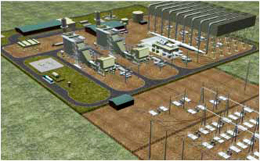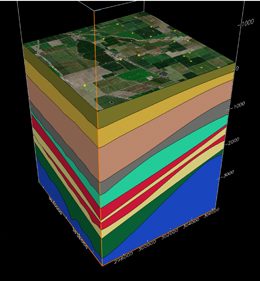
CO2 Capture, Transportation, and Geologic Storage CARBON DIOXIDE (CO2) CAPTURECarbon capture involves separating CO2 from combustion exhaust gases, or in some cases from fuel gases before combustion, at large industrial facilities such as power plants, oil refineries, and cement plants. CO2 separation processes are used in the food and beverage industry—for soft drink carbonation, for example—and in natural gas processing, fertilizer manufacture, and other chemical industries. Adapting these processes to capture CO2 from large industrial combustion sources is currently the focus of many research and demonstration projects that seek to develop approaches that use less energy, take up less space, and cost less. TRANSPORTATIONWhere a suitable geologic formation for secure CO2 storage does not underlie an industrial facility, captured CO2 will need to be transported to a separate location for injection underground. Pipelines are the best way to transport CO2 at substantial volumes. CO2 pipelines are already in commercial use, with over 3500 miles of underground pipe in North America used to transport CO2 from natural reservoirs to oil fields to enhance production. The largest network supplies Permian Basin operators in Texas and New Mexico, who have injected CO2 for 40 years. Above-ground CO2 piping is common in beverage and chemical manufacturing facilities. These pipelines and piping systems have operated for years without significant safety incidents. GEOLOGIC CO2 STORAGENature has been storing CO2 and other fluids in underground geologic formations for millions of years. In general, CO2 storage is successful wherever deep porous and permeable rocks, such as sandstone, are sealed by an overlying continuous layer of low-permeability rock such as shale. Sufficient depth ensures that the CO2, which is injected in a liquid-like dense phase, remains under enough pressure to keep it from becoming more buoyant. To date, most experience with injecting CO2 underground comes from the oil industry, which uses it to “loosen” residual oil in mature producing fields. This practice is known as enhanced oil recovery (EOR). Depleted natural gas fields are also viable candidates for storing CO2. Saline formations—layers of porous rock filled with saltwater—are more common than oil and gas fields. Both nationally and in the West Coast region, saline formations represent the largest CO2 storage opportunity. Indeed, WESTCARB’s capacity estimates for the saline formations across its seven states are the equivalent of hundreds of years of the region’s man-made CO2 emissions.
|
WESTCARB assessed post-combustion CO2 capture technologies and their suitability for West Coast industrial sources such as the natural gas combined cycle plant rendered above. Image Source: Pacific Gas & Electric Company
A geologic model developed by Lawrence Livermore National Laboratory shows subsurface formations in the San Joaquin Valley, California. Assessments of depleted oil fields and saline formations in this area indicate substantial carbon storage potential.
|

